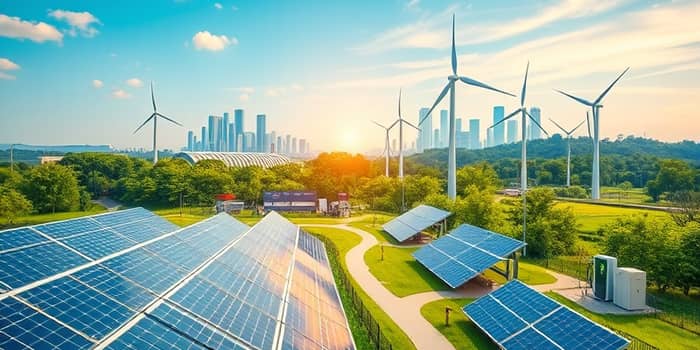
The global energy landscape is undergoing a profound transformation as capital flows increasingly toward sustainable solutions. In 2025, global energy investment reaches a record $3.3 trillion, marking an unprecedented surge in funding for decarbonization efforts. Two-thirds of this expenditure—approximately $2.2 trillion—is earmarked for clean energy technologies, underscoring a monumental shift away from traditional fossil fuels. This infusion of resources promises to reshape industries, bolster economies, and pave the way for a low-carbon future.
Investor confidence in renewable energy continues to climb, driven by policy support, technological advances, and economic factors. Clean energy investment has now doubled compared to fossil fuel spending, with $1.1 trillion allocated to oil, natural gas, and coal. This change signals that stakeholders view renewables not merely as ethical imperatives, but as sound financial opportunities offering stable returns and risk mitigation against volatile fuel markets.
Electricity generation is at the heart of this transformation. Investment in generation capacity now far outpaces upstream fossil fuel production. As electricity becomes the primary vector for decarbonization—powering transportation, industry, and buildings—governments and corporations are racing to upgrade grids, expand storage capacity, and integrate distributed resources. Investment in electricity generation now embodies a strategic pivot toward cleaner, more resilient systems.
Among clean technologies, solar photovoltaic (PV) dominates global investment portfolios. In 2025, an estimated $450 billion will flow into utility-scale and rooftop solar projects, making solar the single largest category of power investment worldwide. Falling module costs, streamlined permitting processes, and innovative financing models have propelled PV adoption, turning once-distant climate goals into concrete infrastructure across continents.
Beyond headline figures, the proliferation of distributed generation, storage, vehicle electrification and electrified heating solutions reflects solar’s versatility. Residential and commercial installations are surging, supported by incentive schemes and smart home integration. As solar PV installations multiply, economies of scale and technological improvements continue to drive costs down, fostering a virtuous cycle of deployment and innovation.
The United States has witnessed remarkable momentum under major federal initiatives such as the Inflation Reduction Act (IRA) and the Infrastructure Investment and Jobs Act (IIJA). In the past four quarters, clean energy and transport investments reached $277 billion—a 13% increase year-over-year—with $67 billion in Q1 2025 alone. This capital push spans manufacturing, energy, industry, and retail sectors, strengthening domestic supply chains and creating jobs.
Of the $227 billion in announced investments under IRA and IIJA, $100 billion has materialized in utility-scale renewables and hydrogen projects, while $82 billion supports distributed renewables and heat pumps. States have complemented these federal efforts, providing an additional $24 billion in tax incentives in 2022. Outsize shares benefitted disadvantaged communities, ensuring that the social and economic advantages of clean energy reach those most in need.
Beyond solar and wind, investment is surging in grid modernization, energy storage, green hydrogen, and emerging low-carbon fuels. Advanced batteries and large-scale storage systems are critical to balancing intermittent renewables, while green hydrogen promises to decarbonize heavy industry and long-haul transport. Although some next-generation technologies remain costly, falling costs and pilot successes are unlocking new financing opportunities.
China leads global clean energy investment, consolidating its technology leadership and driving down equipment costs. Other regions with ambitious decarbonization goals—such as California, Texas, and Florida—are attracting capital for renewables due to favorable regulation and competitive power prices. Investment capital flows to markets where policy certainty and permitting reforms streamline project development.
Despite this progress, significant barriers remain. Green hydrogen, carbon capture, and bioenergy with carbon capture and storage (BECCS) require further cost reductions and scale-up support. Political uncertainties, regulatory hurdles, and fossil fuel lobbying can undermine investor confidence, slowing the pace of deployment. To sustain the investment surge, stakeholders must align on stable, long-term policies.
Massive R&D investment and long-term policies are essential to derisk emerging technologies and foster scalable solutions. Governments, corporations, and financial institutions must collaborate on credible carbon pricing, clear regulatory frameworks, and targeted public investment. By integrating energy security alongside climate objectives, stakeholders can build resilient, forward-looking energy infrastructures.
As capital continues to flow into alternative energy, the world edges closer to a decarbonized future. The co-benefits of this transition—job creation, industrial revitalization, and enhanced public health—underscore the holistic strengths of clean energy deployment. By maintaining momentum, aligning policies, and investing boldly in innovation, we can realize a resilient, equitable energy system for generations to come.
References













